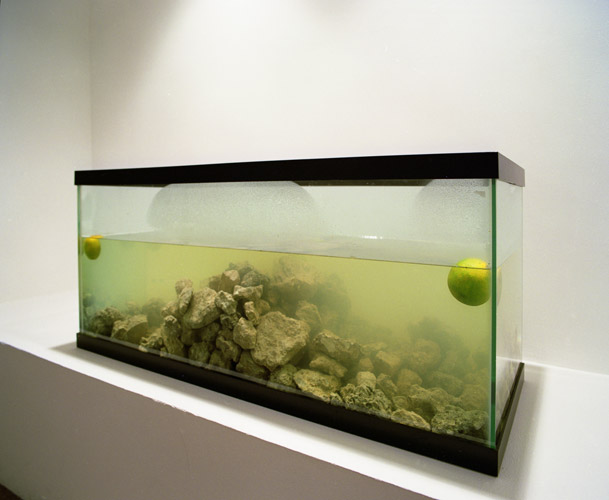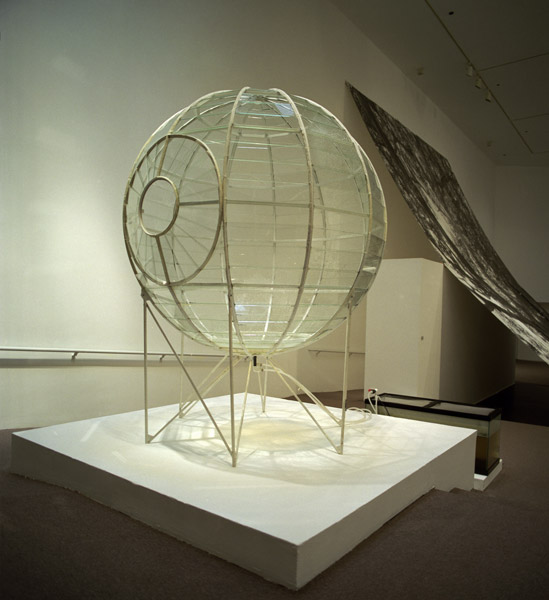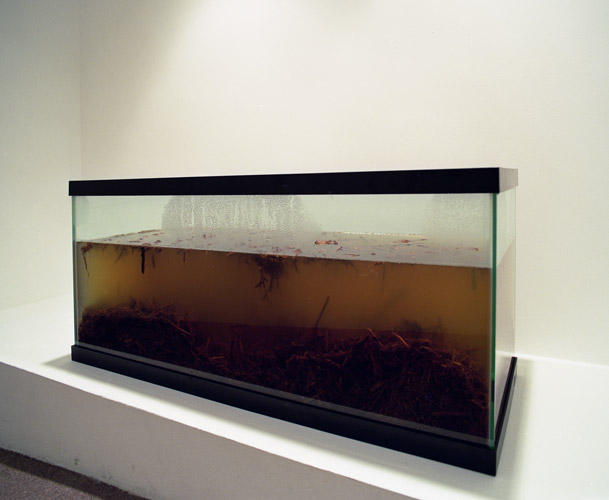 |
 |
 |
|
|
Oculus:
Emerson / Beebe (de Leon / Osceola) Left top:
75 gallon aquarium, water, oranges and coral limestone. Right: Oculus:
Emerson/Beebe (de Leon/Osceola), 6 ft dia., steel, glass
misting system, 75 gallon aquarium containing: black water
from the Loxahatchee River, FL. Oculus:
Emerson/Beebe (de Leon/Osceola), is shown Installed
in the one person exhibition, The Rising Sea: Images and
Constructions from South Florida and Other Selected Works, 1998
along with three tanks of natural and synthesized water from
the Florida landscape. The tank containing water, oranges
and coral limestone, refers to the acidic (carbonic acid) water
of much of Florida's aquifer, reponsible for Florida's extensive
network of underground caves and karst formations. The tank
with water and cypress bark refers to the "black water" flowing
in many surface streams in Florida, made acidic (humic acid)
and darkened by the decay of organic vegetation in the region's
sub-tropical envionment, and is an artificial version of the
actual black
water from
the Loxahatchee River,operative in Oculus: Emerson/Beebee
(de Leon/Osceola)'s misting system and forming the piece's
symbolic "vitreous humor."
|
|